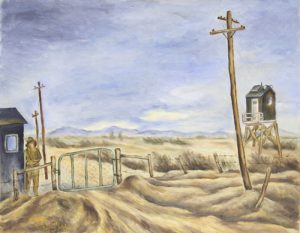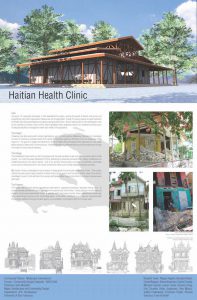
This Contribute post was provided by Zheng (Jessica) Lu, Digital Collections Librarian, Gleeson Library | Geschke Center, University of San Francisco.
One of the newest members of DLF, University of San Francisco Gleeson Library has engaged in digital initiatives since 2007, when the position of Digital Collections Librarian was created. Now, eight years later, we have a CONTENTdm based Digital Collections website showcasing over a dozen digitized collections such as rare books, special collections materials, and student yearbooks, as well as a Digital Commons based IR USF Scholarship Repository that collects faculty and students’ works, publishes ETDs, and hosts e-journals.
While digitized library materials constitute a large portion of the digital collections, more than half of the collections actually have their origins outside the library and quite a few unique collections owe their creation to one particular collaborative project.

It all started in 2011, when USF’s Community Design Outreach program collaborated with the National Japanese American Historical Society (NJAHS) on a project documenting artifacts and sites from the Japanese American Confinement period, funded by the National Park Services (NPS). The project was initially envisioned as a website with approximately 250 images of plans and drawings of Japanese American prison camps of World War II as well as photos of artifacts from NJAHS’s collection that relate to the sites. The project director contacted Gleeson Library for consultation on indexing and data structure. After an in-depth discussion about their needs, I offered to host the digital images on the library’s Digital Collections platform and thus signed onto the project. The Confinement Sites portal now directs traffic to our Digital Collections website when users search for the collection.
Gleeson Library’s involvement turned out to be a huge help to the project in that the library provided a permanent and reliable platform that ensures the longevity and access to the collection, thus exceeding the initial requirements of the NPS. Consequently, a second collaborative grant was awarded by the NPS in 2013 to continue and expand on the previous work. This time, USF’s Museum Studies students undertook the selection and metadata creation for artifacts from NJAHS’s collection. Again I provided consultation on metadata and content organization, delivered two class lectures to the students on library digital collections, and completed the final ingestion at the end of the academic year.

Now the partners are seeking funding for a third installment, but the collaboration did not stop at the series of Confinement Sites projects. After getting to know the capabilities of the library’s digital collections platform, Professor Seth Wachtel, director of USF’s Community Design Outreach program, immediately signed on to partner with the library on creating an open digital archive of Community Design Outreach projects documentations, with designs ranging from a health clinic in Haiti to a preschool in Zambia.
When a community partner reached out to Seth for help on documenting heritage sites using crowdsourcing, he also brought in the library as a potential partner to host a curated collection of the heritage sites documentation. That project is now funded by a NEH digital humanities start-up grant and some of the grant reviewers have specifically commended the well-laid out digital preservation plan, thanks to the partnership with the library.
Here at USF, this model of library supporting faculty, curriculum, and community partners has proven highly fruitful and effective for all involved. We hope to establish the library as the go-to partner for technical expertise and support in collection-centered projects.
University of San Francisco annually surveys graduating students about their satisfaction with various services on campus, and Gleeson Library has consistently ranked #1. We are committed to offering the digital library as essentially a new service to better meet the needs of the campus community in the digital age. As a new DLF member, we now look forward to hearing and learning from fellow member institutions on their thoughts and practices.
